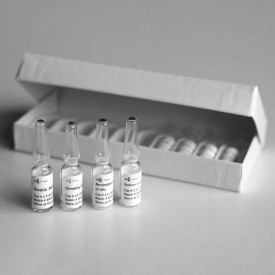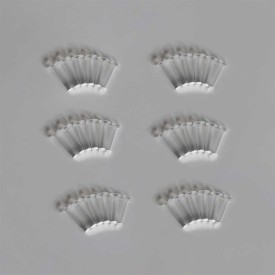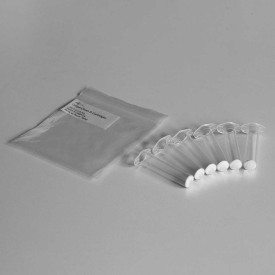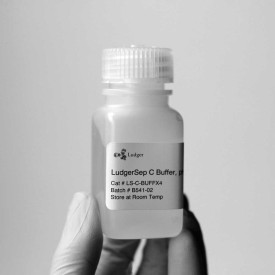LudgerSep C3 anion exchange HPLC Column
Charged-based analysis and purification by HPLC of LudgerTag fluorophore and UV chromophore labelled glycans
The C3 HPLC column contains macroporous (1000 Angstrom) anion exchange particles optimized for anion exchange chromatography of complex glycan mixtures.
The LudgerSep C3 anion exchange column is a highly sensitive anion exchange column designed for charge-based analysis and purification of 2-AB and 2-AA labelled glycans. Sub-picomole quantities can be analysed.
Product specifications
Application: Charged-based analysis and purification by HPLC of LudgerTag™ fluorophore and UV-chromophore labeled glycans.
Description: The C3 HPLC column contains macroporous (1000 Angstrom) anion exchange particles optimized for anion exchange chromatography of complex glycan mixtures.
Particles: 10 µm polymer based hydrophilic particles.
| Cat # | Diameter x Length | Column Volume |
|---|---|---|
| LS-C3-7.5x75 | 7.5 x 75 mm | 3.3 cm3 |
Column Tube: Stainless steel
Flow Rates: Typical flow rates = 0.3 – 1.0 ml/min. Maximum flow rate =1.2 ml/min
Pressure: Pressure should not exceed 150psi
pH Range: 2 – 12
Temperature: Typical operating temperature = 30oC, but increasing the temperature may improve resolution for some samples. Maximum temperature range = 10 -45oC.
Solvents: Shipping Solvent – deionized water. Typical solvent systems for glycan analysis include gradients of aqueous buffers containing acetonitrile and either ammonium formate, ammonium acetate, or sodium acetate salts (maximum 20% acetonitrile and 0.5 Molar salt).
Column Protection: Filter all solvents to 0.2 µm and degas using either helium sparging or vacuum degassing. Filter all samples using a 0.2 µm filter membrane before loading onto the column. Install an in-line 0.2 μm filter with minimal dead volume between the injector and the head of the column to prevent damage to the column by particles.
Amount of Sample: The maximum amount of glycan sample that can be loaded on the column depends on the number and type of glycan components as well as the nature of any non-glycan material. The typical range for successful analytical runs is 1pmol - 1 nmol per sample peak and up to 200 nmol of total glycans.
Suitable Samples: Suitable samples include glycans labeled with the following LudgerTag labels : 2-AB (2-aminobenzamide)
Sample: Filter samples to 0.2 µm then dry using a centrifugal evaporator.
Preparation: Re-dissolve in 5 - 50 µl of the starting buffer (i.e. the solvent mixture used at the very start of the HPLC gradient) then inject.
Sample Detection: Either fluorescence or UV-absorbance depending on the dye used (see the appropriate LudgerTag instruction guide).
Handling: Ensure that any glass, plasticware or solvents used are free of glycosidases and environmental carbohydrates. Use powder-free gloves for all sample handling procedures and avoid contamination with environmental carbohydrate.
Safety: Please read the Material Safety Data Sheets (MSDS's) for all chemicals used. All processes involving labeling reagents should be performed using appropriate personal safety protection – safety glasses, chemically resistant gloves (e.g. nitrile), etc. - and where appropriate in a laboratory fume cupboard.
For research use only. Not for human or drug use
HPLC System Requirements
LudgerSep C3 columns can be used with an HPLC system capable of delivering accurate gradients at a flow rate of 0.3 to 1.0 ml/min. In general, systems which mix eluants at high pressure (after the pump head) have lower dead volumes and supply more accurate gradients that are appropriate at the flow rate needed for LudgerSep columns.
For the 7.5 mm diameter column inject the sample in up to 100 µl of the starting buffer (i.e. the solvent mixture used at the very start of the HPLC gradient).
A fluorescence detector is required with the following detection wavelengths:
| Fluorescence Label | λex (nm) |
λem (nm) |
|---|---|---|
| 2-AB [2-aminobenzamide] | 330 | 420 |
For optimal detection, use wide slit widths (e.g. 10 – 20 nm). Sub-picomole levels of 2-AB or 2-AA labelled glycans can be detected with good signal-to-noise (depending on the sensitivity of the detector used).
To improve repeatability and intermediate precisions for glycan analyses use a column temperature controller. Good results can be obtained with a column temperature of 35oC.


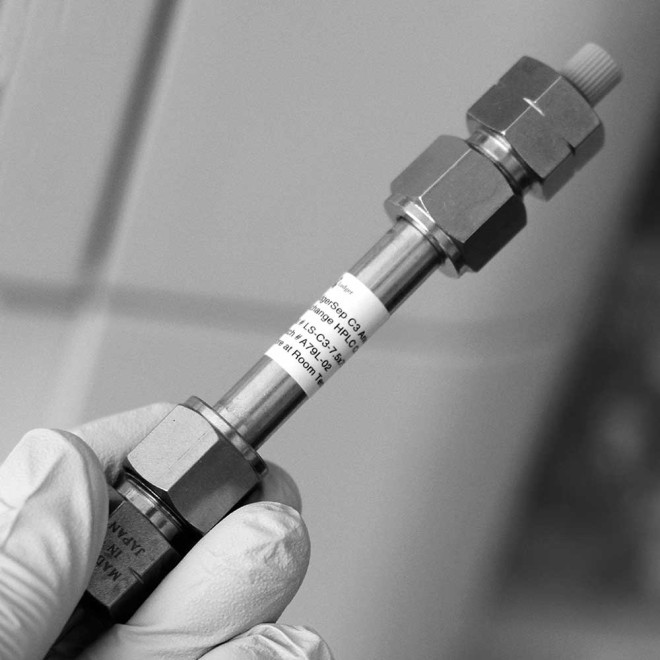
 Product guide
Product guide